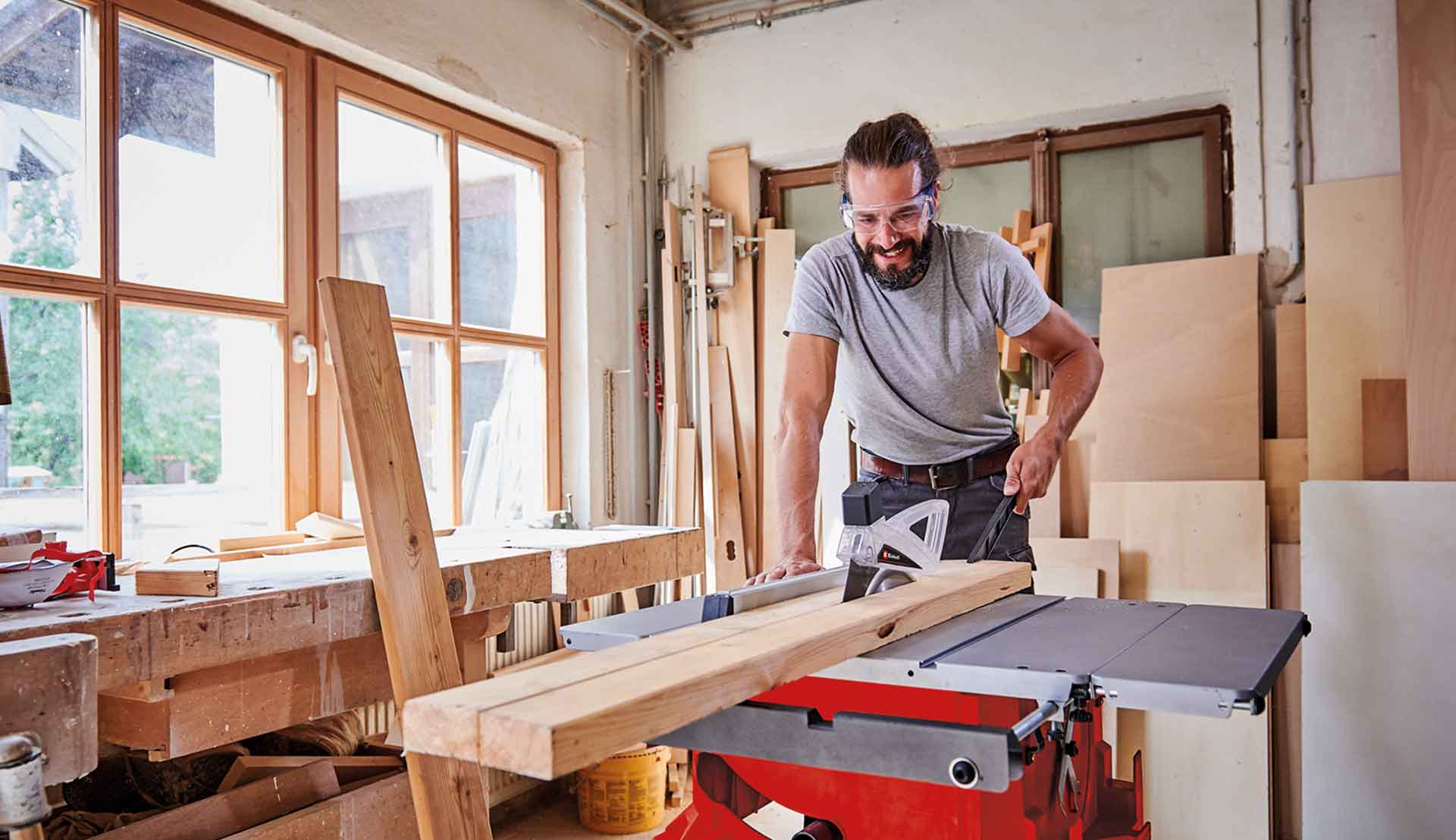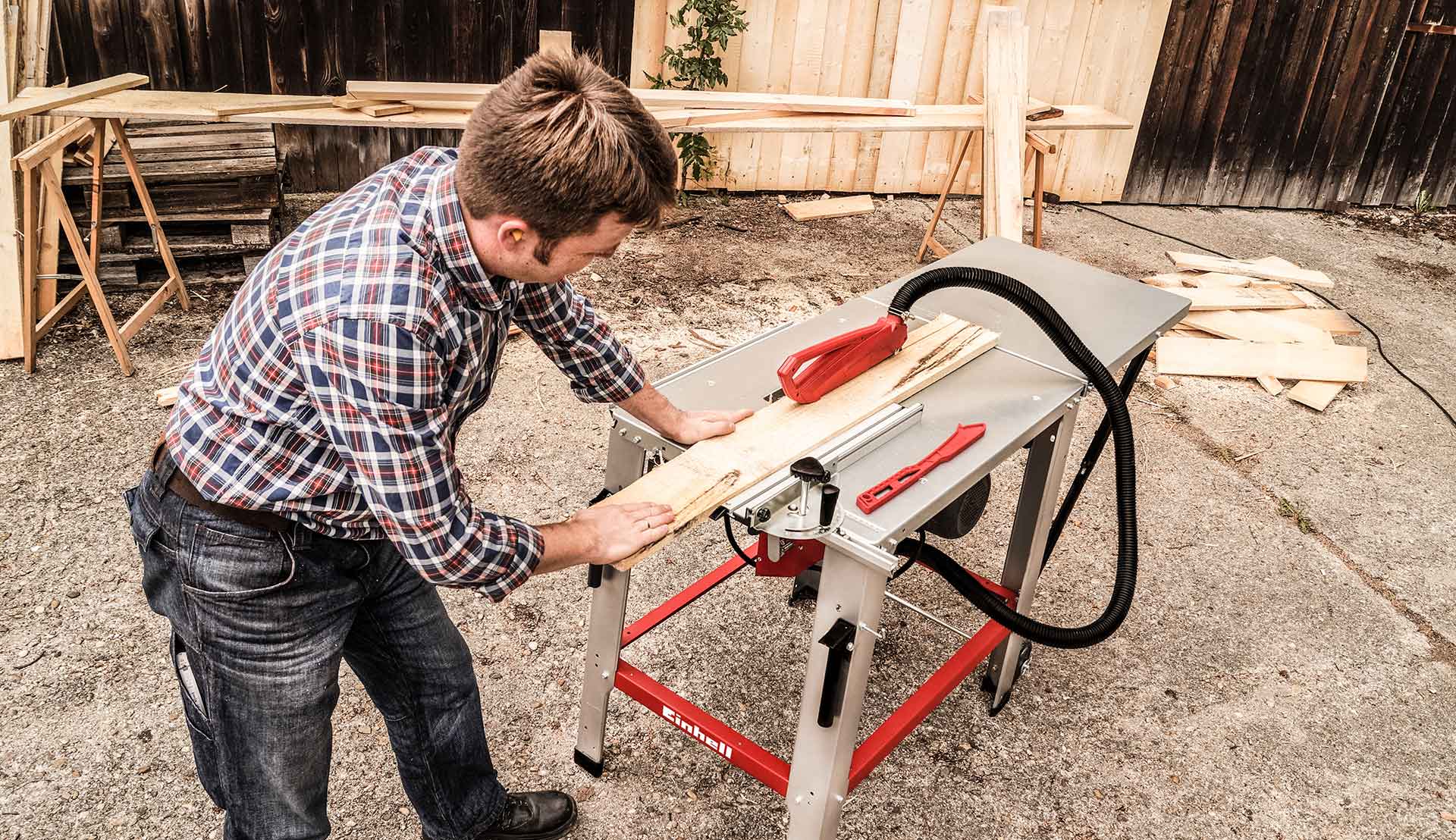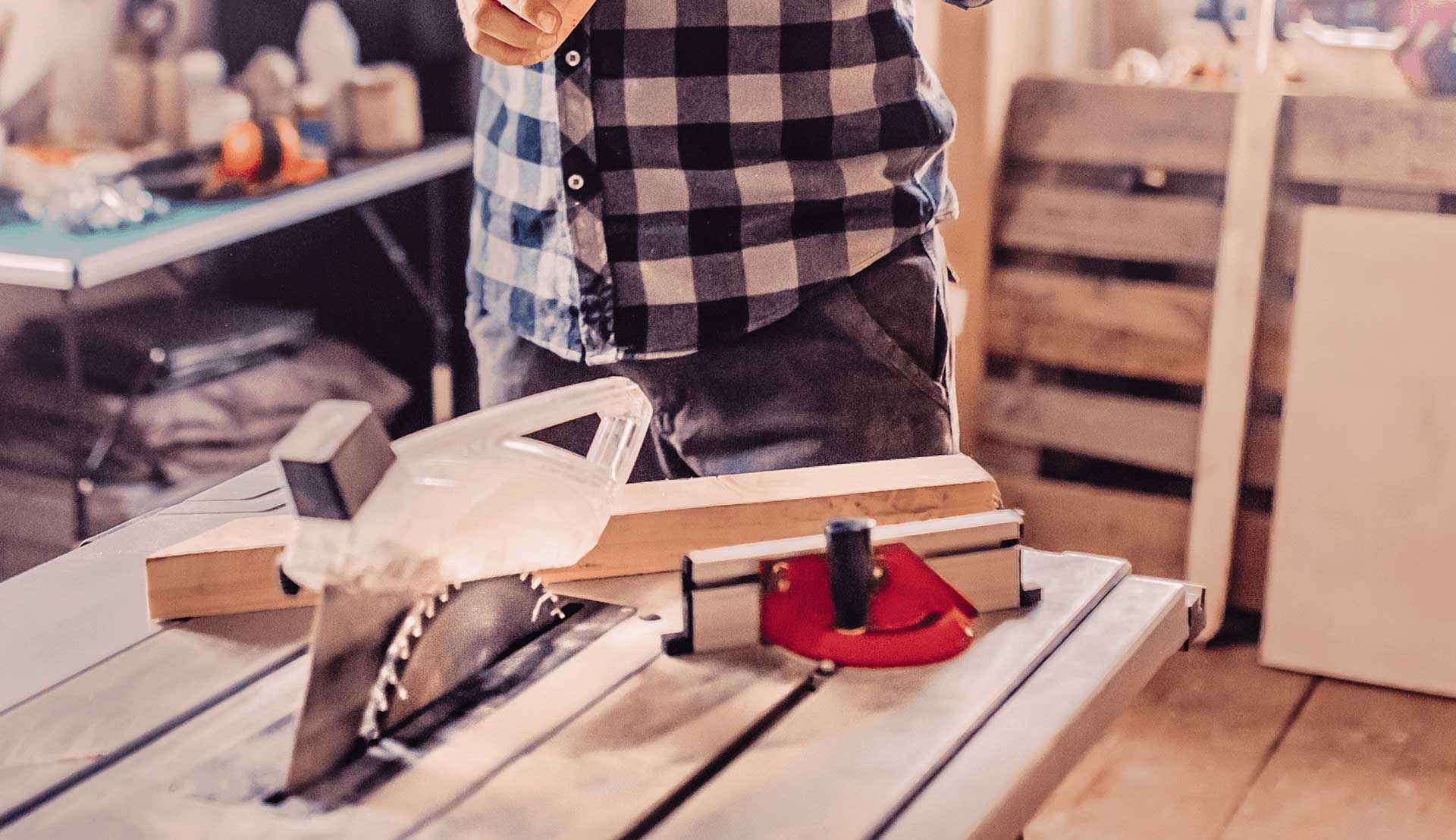Table Saw: Properly adjusting the angle and parallel guides
To work accurately and cleanly with the table saw, it is important that the device is properly set up. In particular, the parallel and angle guide will greatly facilitate the execution of angled and longitudinal cuts. In the following article, we explain the functions of the parallel and angle guide, and how to properly adjust the distance to the saw blade.

How to use the parallel guide of a table saw?
At the beginning, let's clarify the following question: What is the parallel guide for a table saw? A parallel guide is an adjustable guide rail made of aluminum or steel for table saws. It is mounted parallel to the saw blade and fixed in the desired position. The parallel guide is particularly helpful when you want to build a shelf or a fence, and you need precise cuts. It also makes cutting larger workpieces for roof construction or garden sheds much easier with the table saw.
You use the guide to precisely and evenly guide the workpiece from the edge of the workpiece to the saw blade over the entire cutting length. This way, you can cut equally wide and long pieces from the same workpiece. The parallel guide allows you to make particularly precise and millimeter-accurate cuts, and the best part is that you can complete your work much faster.
At the beginning, you mark the dimension precisely on a spot on the workpiece. Then, you loosen the screws of the parallel guide, adjust the lever to the desired position, and fix it. And now you can cut equal width and long strips. Be sure to ensure that the parallel guide is fixed and can withstand the pressure. Ideally, the parallel guide should be exactly perpendicular to the saw blade. You can measure the distance to the saw blade at various points to check.

How to use a table saw with angle guide?
The angle guide allows you to make precise right-angled cuts without readjustment. Simply mount the angle guide onto the rail of the table, set it to a specific angle position using a scale, and then secure it in place. You then guide your workpiece along the angle guide through the saw blade, resulting in precise angled cuts.
If you need to cut multiple workpieces at the same angle, using the fixed guide saves you the hassle of measuring each time. Most Einhell table saws come with an angle guide designed for miters ranging from 60° to -60°.

Working with the angle guide and the 5-cut method
To achieve an especially precise, right-angled longitudinal cut, you can use the 5-cut method to check the cutting result. The angle guide, also known as the crosscut fence, is ideal for this method. The 5-cut method is mainly used in the field of furniture making.
With this method, you make five cuts on a board used as a tool. At the end, you get a test piece labeled A and B. Using a caliper, you measure and note down the widths a and b. If the widths have different measurements, the cutting error is the difference between both widths. If a is greater than b, the angle is smaller than 90 degrees. If a is smaller than b, the angle is greater than 90 degrees. By repeatedly adjusting the guide and re-cutting the workpiece, you can reduce the cutting error to 0 mm.
Right-angled cuts and serial cuts for your DIY projects
The angle and parallel guide make your work with the table saw much easier and allow you to make right-angled cuts and series cuts in no time. Once measured and adjusted, you can always cut equally long and wide pieces with it. Table saws with parallel and angle guides are particularly useful for your DIY furniture projects. Subscribe to the Einhell newsletter or our social media channels now, receive regular DIY tips and tricks, and become a doer yourself.

